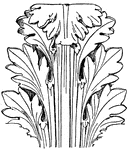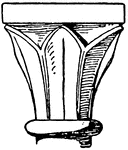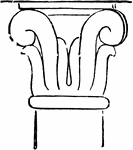
Capital in a Bas-Relief from Kuyunjik
Some reliefs portray small façades of temples with capitals. This figure shows an affinity, although…
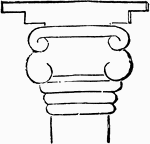
Capital in a Bas-Relief from Kuyunjik
Some reliefs portray small façades of temples with capitals. This figure brings out prominently…
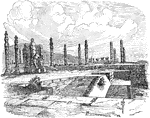
Ruins of Persepolis
Persepolis was the ceremonial capital of the Persian Empire during the Achaemenid dynasty. Persepolis…

Capital and Entablature from the Rock Tomb of Darius
The columns in the ruins of Persepolis are circular and slender, and have capitals and bases. The capital…
Restored Capital from the Ruins of Persepolis
Other capitals are more compact, where from the lower part, which is in the shape of a globular vessel,…

Capital from the Ruins of Persepolis
Other capitals are more compact, where from the lower part, which is in the shape of a globular vessel,…
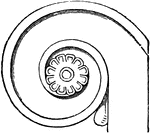
Volute of the Persian Column
Other capitals are more compact, where from the lower part, which is in the shape of a globular vessel,…

Doric Column from the Temple of Neptune at Paestum
The Doric columns, which are short, powerful, and closely ranged together, in order to support the weight…
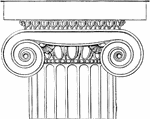
Ionic Capital from the Temple of Minerva Polias at Priene
In the capital the Doric echinus is replaced either by a cyma ornamented with leaves, or, more generally,…
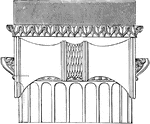
Side View of the Ionic Capital from the Temple of Minerva Polias at Priene
These volutes, or scrolls, when viewed from the side, appear to meet in the middle, and form a wavy…

Section of a Volute of an Ionic Capital
These volutes, or scrolls, when viewed from the side, appear to meet in the middle, and form a wavy…
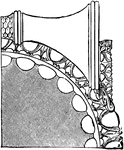
Top View of the Ionic Capital from the Temple of Minerva Polias at Priene
These volutes, or scrolls, when viewed from the side, appear to meet in the middle, and form a wavy…
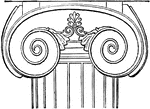
Ionic Capital from the Temple of Apollo at Basse
In the capital the Doric echinus is replaced either by a cyma ornamented with leaves, or, more generally,…
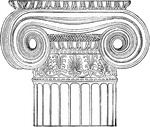
Ionic Angle Column from the Temple of Minerva Polias at Athens, Front
The good effect of the Ionic capital is really only produced by the front-view. It seems calculated…

Ionic Angle Column from the Temple of Minerva Polias at Athens, Side
The good effect of the Ionic capital is really only produced by the front-view. It seems calculated…
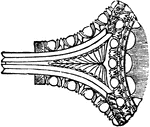
Plan of Ionic Antæ Capital from the Temple of Minerva Polias at Athens
The capital of the antæ and pilasters is without volutes, as is seen here. The shaft has no flutings;…
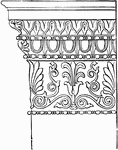
Ionic Antæ Capital from the Temple of Minerva Polias at Athens
The capital of the antæ and pilasters is without volutes, as is seen here. The shaft has no flutings;…
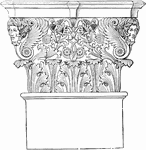
Corinthian Capital
The structural tendency which prevails in the capitals of all orders to change from the circular form…

Egg-and-Dart
Egg-and-dart is an ornamental device often carved in wood, stone, or plaster quarter-round ovolo mouldings,…
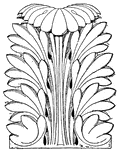
Roman Leaf
The Roman Leaf design is shown as a capital of a column in Pantheon, Rome. The spoon-like roundings…
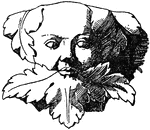
Pilaster Grotesque Mask
The Pilaster Grotesque mask comes from a part of a capital pilaster of the tomb of Louis XII in St.…
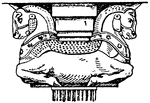
Ancient Persian Capital
The Ancient Persian capital is a design of the fore-parts of bulls. It is an Old Persian style that…
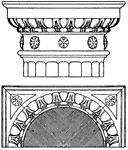
Doric Capital
The Doric capital is an Italian Renaissance design consisting of the abacus, which is square and the…
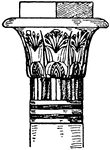
Egyptian Capital
The Egyptian capital is the upper termination of the column with opened papyrus flowers. It is found…
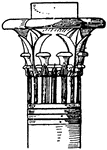
Egyptian Capital
The Egyptian capital is the upper termination of the column with opened papyrus flowers. It is found…
Egyptian Capital
This Egyptian capital is the upper termination of the column with cinctured bundles of papyrus stems.
Egyptian Capital
This Egyptian capital is the upper termination of the column with cinctured bundles of papyrus stems.…

Moorish Capital
The Moorish capital is the upper termination design of a column found in the hall of two sisters Alhambra,…

Moorish Capital
The Moorish capital is the upper termination design of a column found in the hall of two sisters Alhambra,…

Graeco-Doric Capital
The Graeco-Doric capital is an antique design. It is found on the upper termination of a column.
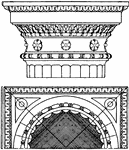
Roman-Doric Capital
The Roman-Doric capital is an antique design. It is found on the upper termination of a column.
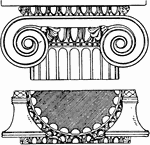
Graeco-Ionic Capital
This Graeco-Ionic capital is a scroll design with intervals of egg band and palmettes.
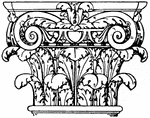
Roman Composite Capital
The Roman composite capital is a fusion of the ionic and corinthian capitals.

Ionic Capital
The ionic capital is a design of a scroll rolled on both sides with spiral curves. It is found in Bassae,…

Ionic Capital
The ionic capital is a design of a scroll rolled on both sides with spiral curves. It was found in Pompeii.
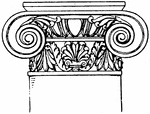
Roman-Ionic Capital
The Roman-ionic capital is a design of a scroll rolled on both sides with spiral curves. It has an added…

Graeco-Ionic Capital
The Graeco-ionic capital is a design of a scroll rolled on both sides with spiral curves. It has an…
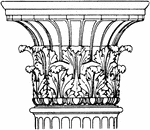
Antique Corinthian Capital
The antique Corinthian capital is a found in Melos, Greece. It is a design of a two rows of leaves that…
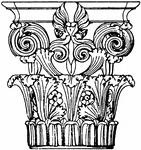
Greek Corinthian Capital
The Greek Corinthian capital is found in a monument in Lysikrates, Athens. It is a design of spiral…
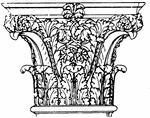
Roman Corinthian Capital
The Roman Corinthian capital is found in the palaces of the emperors in Rome. It is a design of spiral…
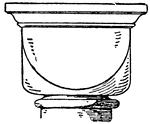
Romanesque Cushion Capital
The Romanesque Cushion Capital is found in St. Gereon's church in Cologne, Germany. It is a design of…
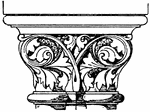
Romanesque Coupled Capital
The Romanesque Coupled Capital looks like two capitals that are conjoined together.
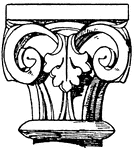
Romanesque Capital
This Romanesque capital is a simple design that is reminiscent of the Antique style.
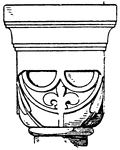
Romanesque Cushion Capital
The Romanesque cushion capital is a design found in a monastery in Lippoldsberg, Germany. The design…
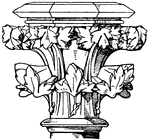
Late Gothic Capital
The late Gothic capital has an abacus that is octagonal with projected leaves. This capital has an appearance…
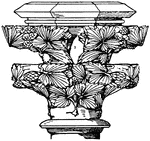
Late Gothic Capital
The late Gothic capital has an abacus that is octagonal with projected leaves. This capital has an appearance…
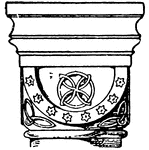
Romanesque Cushion Capital
This Romanesque Cushion Capital is found in the Abbey church in Germany. It is a design of a half sphere…
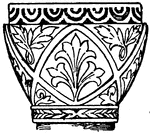
Byzantine Capital
The byzantine capital is found in the St. Sophia in Turkey. This design is called a Trapeziform, a byzantine…
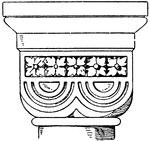
Romanesque Double-Cushion Capital
The Romanesque Double-Cushion Capital is an 11th century design found in the Rosheim church in France.…
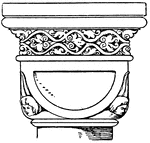
Romanesque Double-Cushion Capital
The Romanesque Double-Cushion Capital is a design of a half sphere that is cut by planes below and on…
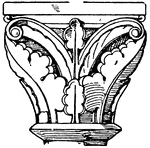
Romanesque Capital
This Romanesque capital is found in cloisters of a church. It is a simpler design that is reminiscent…

Romanesque Capital
This Romanesque capital is found in cloisters of a church. It is a simpler design that is reminiscent…
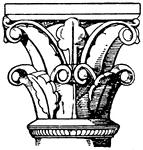
Romanesque Capital
This Romanesque capital is found in cloisters of a church. It is a simpler design that is reminiscent…
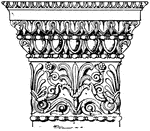
Greek Doric Pilaster Capital
The Greek Doric pilaster capital is found in the ancient Greek temple of Erechtheum in Athens. It has…
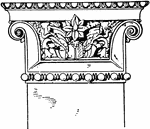
Greek-Ionic Pilaster Capital
The Greek-ionic pilaster capital is more of an antique style that has spiral scroll like ornaments.
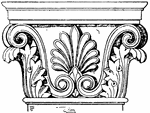
Greek-Corinthian Pilaster Capital
The Greek-Corinthian pilaster capital has a palmette leaf design with spiral scroll like ornaments on…
